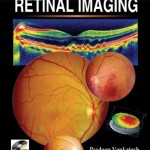 By
By
- Padmaja Kumari Rani, Consultants, Sri Bhagwan Mahavir Vitreoretinal Services, Sankara Nethralaya, Chennai
- Gopal Lingam, Consultants, Sri Bhagwan Mahavir Vitreoretinal Services, Sankara Nethralaya, Chennai
- Tarun Sharma, Consultants, Sri Bhagwan Mahavir Vitreoretinal Services, Sankara Nethralaya, Chennai
- Lekha Gopal, Consultants, Sri Bhagwan Mahavir Vitreoretinal Services, Sankara Nethralaya, Chennai
- Pradeep Susvar, Consultants, Sri Bhagwan Mahavir Vitreoretinal Services, Sankara Nethralaya, Chennai
- Muna Bhende, Consultants, Sri Bhagwan Mahavir Vitreoretinal Services, Sankara Nethralaya, Chennai
- Ashok Rangarajan, Consultants, Sri Bhagwan Mahavir Vitreoretinal Services, Sankara Nethralaya, Chennai
- Dhanashree Ratra, Consultants, Sri Bhagwan Mahavir Vitreoretinal Services, Sankara Nethralaya, Chennai
- Vikas Khetan, Consultants, Sri Bhagwan Mahavir Vitreoretinal Services, Sankara Nethralaya, Chennai
The aim of The Sankara Nethralaya Atlas of “Retinal Diseases” is to provide a comprehensive coverage of topics related to vitreoretinal diseases with excellent quality fundus pictures speaking for themselves. Target audience for the book is residents in ophthalmology, vitreoretinal fellows, and practicing ophthalmologists. The Atlas has Seven Sections with 47 Chapters dealing with various retinal diseases. We did not include uveitic entity affecting retina; readers are encouraged to refer to our previously published Atlas of Uveitis and Scleritis. Each chapter is designed with an overview of the study topic highlighting clinical profile, relevant investigations, treatment and prognosis. Interesting clinical variants of the condition are presented with brief clinical history and color fundus photographs or montage or Ret Cam images. Wherever necessary, images of adjunct investigations are included; these are fundus fluorescein angiography, indocyanine angiography, optical coherence tomography, electroretinogram, B-scan ultrasound, CT scan and MRI. Suggested reading of each chapter has comprehensive coverage of both old and latest references. Each chapter has a self-test with multiple-choice questions to allow the reader to recollect the information presented. Practical tips related to the topics are given at the end of each case description. New drugs or latest clinical trials related to the topic are also included.











